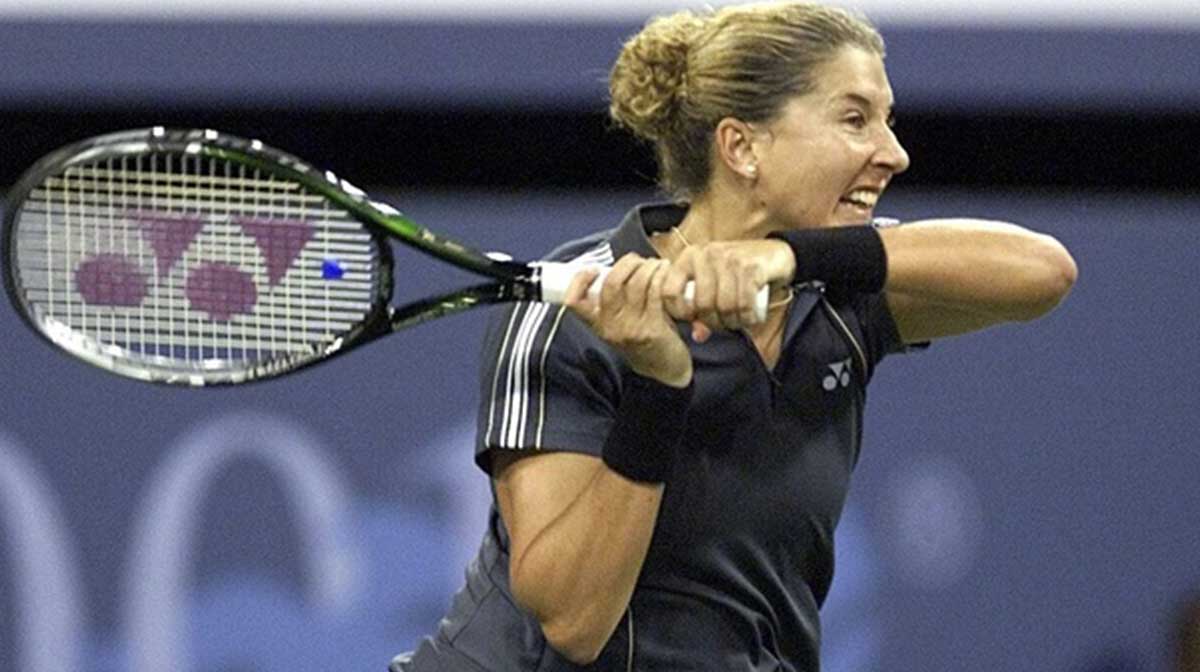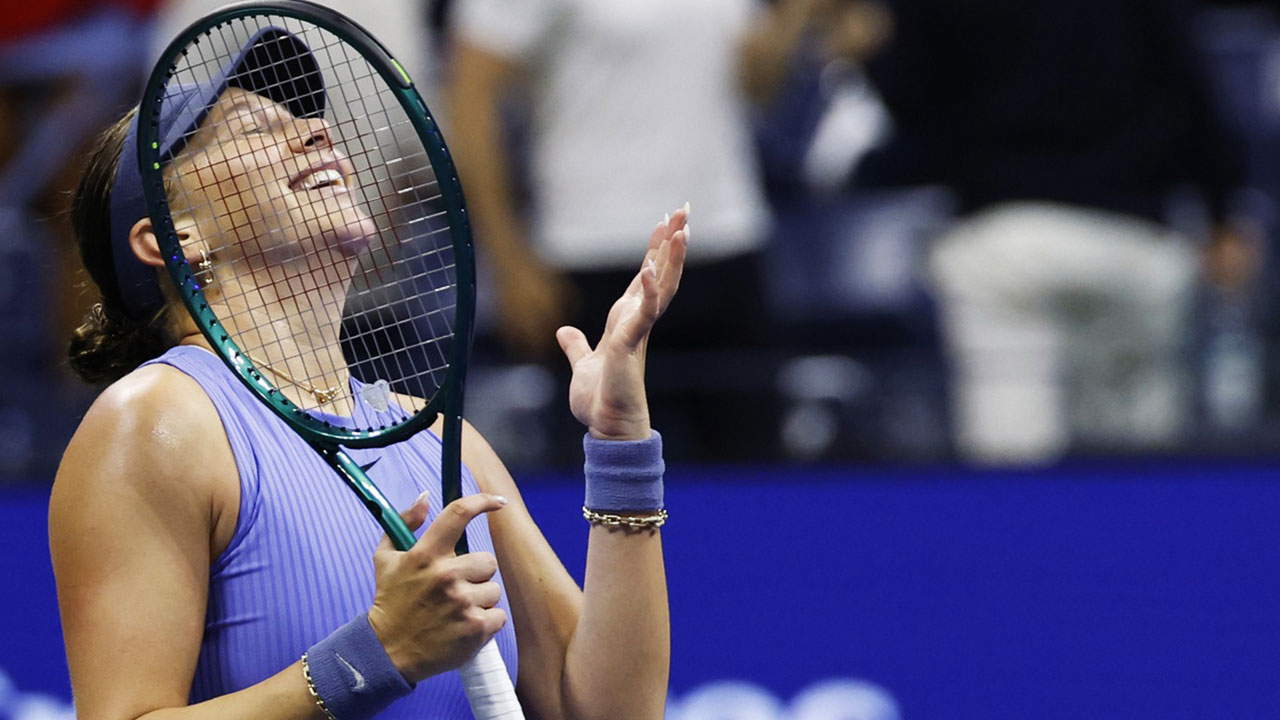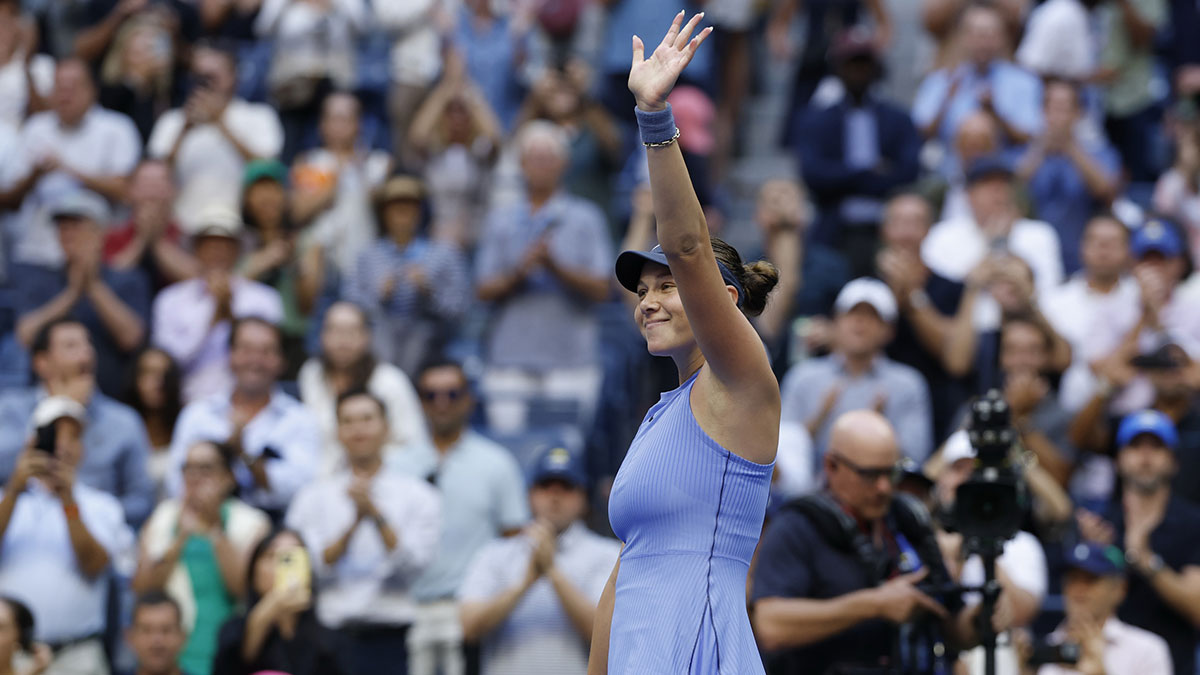International tennis icon Monica Seles has conquered multiple hurdles throughout her career, and she's choosing to share her latest battle with the same fans who have shown her support over the decades of her life in the spotlight. The nine-time Grand Slam winner and International Tennis Hall of Famer recently unveiled that she's been diagnosed with the autoimmune disease myasthenia gravis (MG) and is volunteering to share her experience with the public.
Myasthenia gravis is described by the National Institute of Neurological Disorders and Stroke as a chronic neuromuscular disease that causes weakness in the voluntary muscles, which most commonly impacts adult women under 40 and men over 60 but can occur at any age. Seles opened up to the Associated Press about her diagnosis in an interview.
The 51-year-old is partnered with a Netherlands-based immunology company called “argenx” on their “Go for Greater” campaign, aimed at supporting people with myasthenia gravis with tools and resources to increase the quality of life for those with the disease. Seles is vocal about the impact companies like argenx have on those living with MG and how it would've benefited her life to know about them sooner.
“When I got diagnosed, I was like, ‘What?!’” Seles said. “So this is where — I can’t emphasize enough — I wish I had somebody like me speak up about it.”
Seles stated that she started to notice the signs, which were actually symptoms of the disease, while she was going about her everyday activities, including trying to swing a tennis racket like she had throughout her storied career.
“I would be playing with some kids or family members, and I would miss a ball. I was like, ‘Yeah, I see two balls.’ These are obviously symptoms that you can’t ignore,” Seles said. “And, for me, this is when this journey started. And it took me quite some time to really absorb it, speak openly about it, because it’s a difficult one. It affects my day-to-day life quite a lot.”
Seles explained that she had never heard of myasthenia gravis before receiving her diagnosis, but her declining ability to use her arms and legs as she had before was enough of a concern for her to seek out a neurologist. “Just blowing my hair out … became very difficult,” she admitted.
“I had to, in tennis terms, I guess, reset — hard reset — a few times,” said Seles. “I call my first hard reset when I came to the U.S. as a young 13-year-old [from Yugoslavia]. Didn’t speak the language, left my family. It [was] a very tough time. Then, obviously, becoming a great player, it’s a reset, too, because the fame, money, the attention, changes [everything], and it’s hard as a 16-year-old to deal with all that. Then obviously my stabbing — I had to do a huge reset,” Seles said.
Seles was attacked by a man with a knife during a tennis tournament in Hamburg, Germany, in April 1993. She's described what it's like to now go through the biggest set of adjustments she's had to endure since the scary incident.
“Really, being diagnosed with myasthenia gravis: Another reset. But one thing, as I tell kids that I mentor: ‘You’ve got to always adjust. That ball is bouncing, and you’ve just got to adjust,’” she added. “And that’s what I’m doing now.”


















